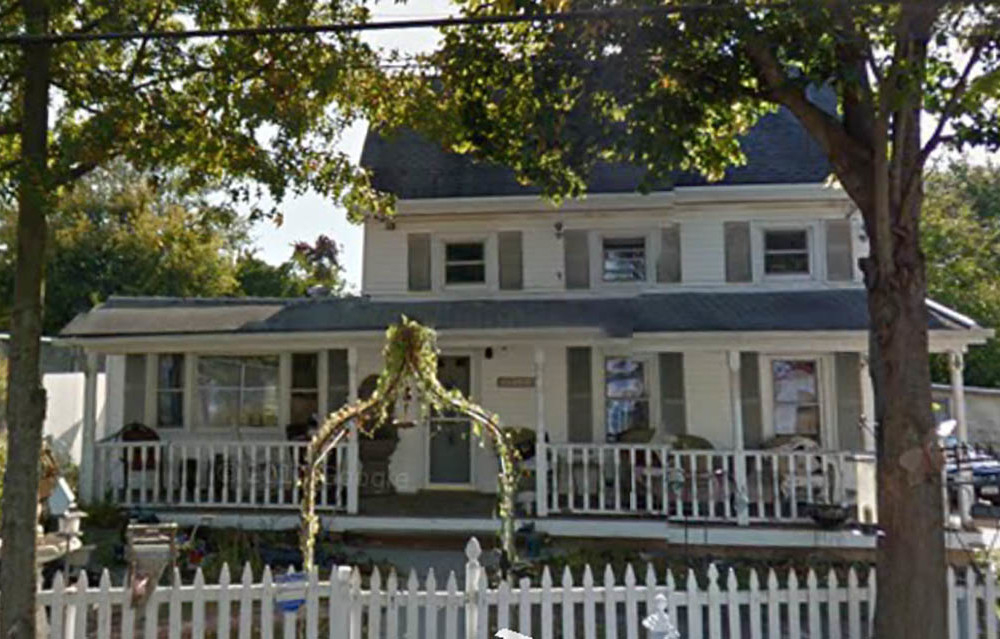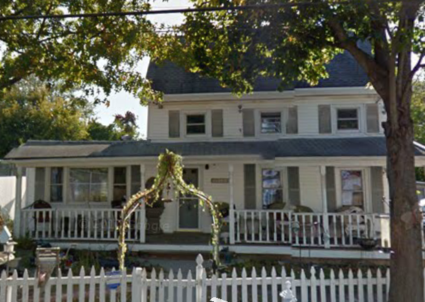122 Androvette Street House, Staten Island
Address: 122 Androvette Street
Constructed: c. 1790
LPC Action: Public Hearing 10/1/1991
LPC Backlog Hearing: Removed from the calendar without prejudice
LPC- Fact Sheet | Research File
LPC Statement of Significance:
While the identity of the original owner of the house at 122 Androvette Street and its earliest history have not been definitively determined, the building does appear to be the oldest surviving structure in Charleston (Staten Island). The 122 Androvette Street House may be the dwelling indicated on a 1797 map as belonging to landowner "P. Androvet" [sic]; it is shown to be one of only two houses located in the then sparsely populated area. The late Staten Island borough historian, Loring McMillen, undertook an extensive investigation of the framing and other interior features of the house, leading him to postulate a construction date of c. 1790. His investigations also indicated that the present rear of southern elevation was the original facade, a siting which oriented the house toward the inlet identified as "Toppers Creek" on the early map.
The size and shape of the house, the tall gabled roof, and the placement of the windows are characteristic of the house's date. Distinctive features of the house, which further identify its late eighteenth-century vernacular, include the short second-story windows and the large chimney (obscured by later siding) located on the western side of the building. Later additions have been added at the rear and at the east side.
The 122 Androvette Street House and the acreage originally associated with it (the current lot is roughly 75 by 100 feet) were later acquired by Balthazar Kreischer, founder of the B. Kreischer & Sons brick manufacturing company. It was one of the many parcels he purchased in the village, then known as Androvetteville, beginning in 1853. The location Kreischer selected for the fire brick factory was a short distance south of Toppers Creek, while the area on the north side of the creek was, over a period of time, developed as a large complex of workers' housing encompassing some large multi-unit structures and simple double houses. It is possible that the 122 Androvette Street House was one of several early swellings utilized for the factory's first workers. The 122 Androvette Street House is a rare survivor recalling the early history of the area prior to its transformation into the factory-related village of Kreischerville.

